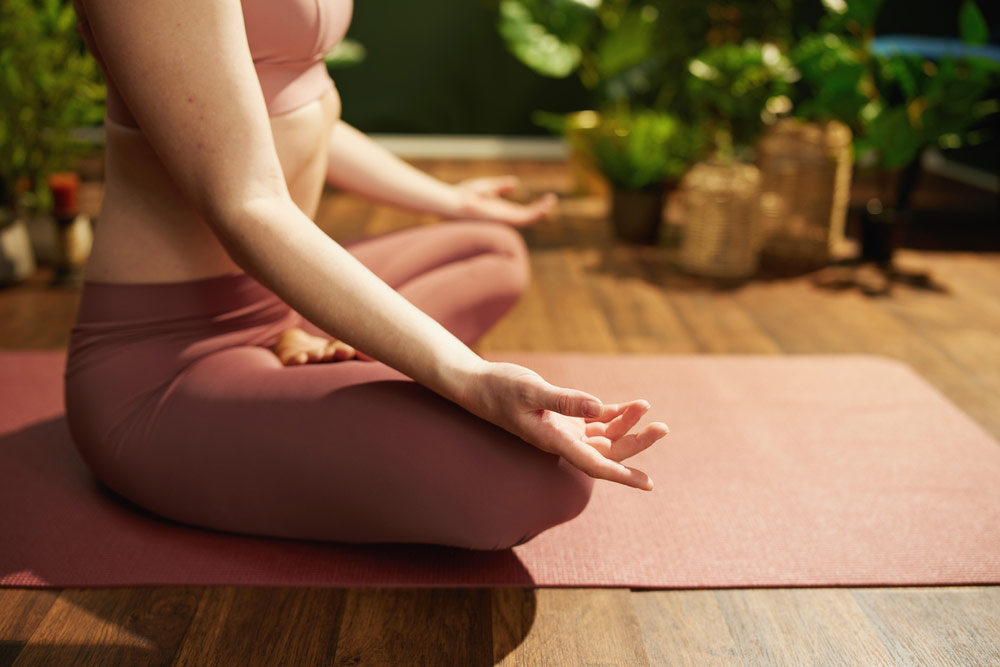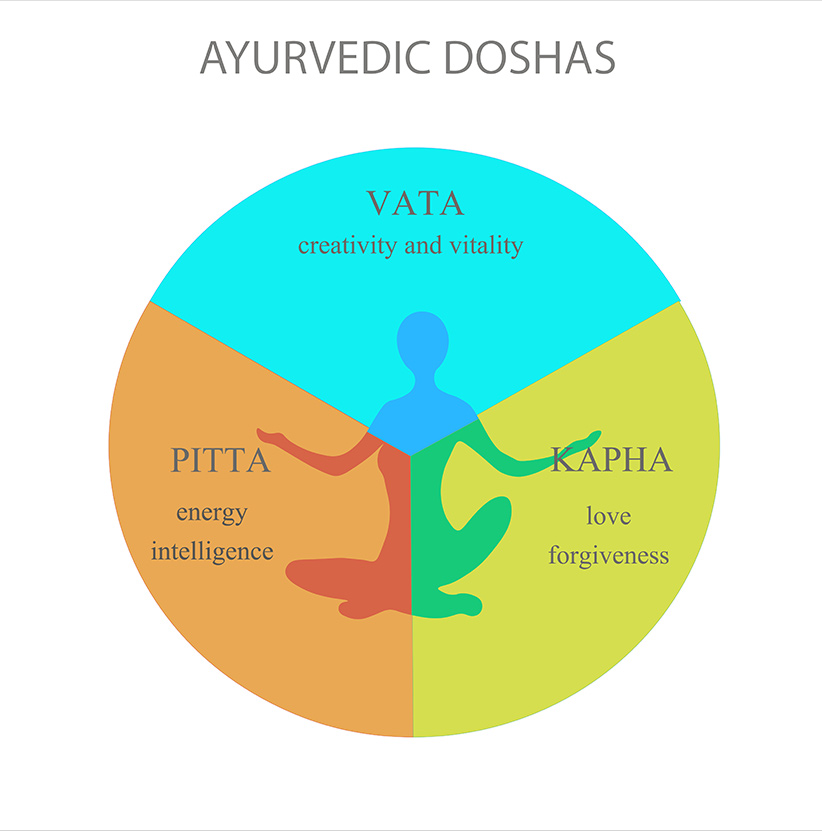
Ayurveda Body Types Explained: Learn Your Dosha for Optimal Wellness
By Mitesh Raichada
Ayurveda categorizes individuals into three body types—vata, pitta, and kapha—each with unique traits and needs. Understanding your dosha body type may help you make personalized lifestyle and dietary choices for balance, vitality, and well-being. Small adjustments based on your constitution can support long-term physical, mental, and emotional harmony.
Ayurveda, an ancient practice of holistic well-being, teaches that each person is born with a unique dosha body type—a natural constitution that influences physical, mental, and emotional traits. These Ayurveda body types fall into three categories: vata, pitta, and kapha, each governed by different elements and characteristics.
Understanding your Ayurvedic body type can help you make choices that promote balance, vitality, and long-term well-being.
Unlike one-size-fits-all approaches to health, Ayurveda recognizes that what works for one person may not work for another. By learning about vata, pitta, and kapha body types, you may gain deeper insight into your natural tendencies, from digestion to temperament.
In this guide, we’ll explore the qualities of each dosha body type, how to identify your own, and ways to cultivate harmony through lifestyle and nutrition. Let’s dive into the wisdom of Ayurveda and discover your Ayurveda type for optimal wellness.
What Are Ayurveda Body Types?
Ayurvedic practitioners believe the body and mind are governed by three fundamental energies, or doshas: vata, pitta, and kapha. They teach that these doshas are derived from the five elements—earth, water, fire, air, and ether—and shape our physical structure, personality, and overall well-being.
Practitioners believe each person has a unique balance of these doshas, but one or two tend to be dominant. Recognizing your Ayurvedic body type may help you make lifestyle and dietary choices that align with your natural constitution. In Ayurvedic practice, when your dosha is in balance, you often feel vibrant and healthy. When out of balance, some believe you may experience discomfort or disharmony.
Ayurveda doesn’t believe in a universal approach to wellness. Instead, it provides personalized guidance based on your dosha body type to help you maintain equilibrium in daily life.
Vata Body Type: The Energetic & Creative Dosha
The vata body type is governed by the elements of air and ether (space). People with a dominant vata dosha are often creative, energetic, and quick-thinking, but they can also experience irregular digestion, anxiety, and restlessness when imbalanced.
Characteristics of the Vata Body Type
- Physique: Naturally slim, light, and agile with a tendency to have dry skin and cold hands and feet.
- Mind & Personality: Highly imaginative, spontaneous, and enthusiastic, but may struggle with overthinking.
- Digestion & Energy: Prone to bloating, irregular appetite, and variable energy levels, with bursts of activity followed by fatigue.
How to Balance Vata
- Diet: Favor warm, cooked meals with healthy fats to nourish and ground the body. Avoid raw, cold, and dry foods.
- Lifestyle: Establish a consistent routine, prioritize rest, and practice grounding activities like meditation and gentle yoga.
- Self-Care: Use warm oil massages (Abhyanga) and herbal teas to soothe the nervous system.
When in balance, vata types are vibrant, inspired, and full of life. When out of balance, they may feel scattered, anxious, or exhausted.
Imagine what life could feel like with true balance—body, mind, and spirit.

Pitta Body Type: The Driven & Passionate Dosha
The pitta body type is ruled by fire and water, giving pitta individuals a natural intensity and strong will. When balanced, pittas are sharp-minded, ambitious, and goal-oriented, but excess pitta can lead to irritability, overheating, and inflammation.Characteristics of the Pitta Body Type
- Physique: Medium build with a muscular, athletic frame, warm body temperature, and often oily or sensitive skin.
- Mind & Personality: Focused, determined, and intelligent, but may struggle with perfectionism and competitiveness.
- Digestion & Energy: Strong appetite and fast metabolism, but prone to acid reflux, heartburn, and overheating.
How to Balance Pitta
- Diet: Favor cooling foods like leafy greens, cucumbers, and sweet fruits. Avoid spicy, fried, and overly salty foods.
- Lifestyle: Incorporate cooling activities like swimming or spending time in nature to diffuse excess heat.
- Self-Care: Use coconut oil for self-massage and practice mindfulness to reduce stress and intensity.
Kapha Body Type: The Grounded & Nurturing Dosha
The kapha body type is dominated by earth and water, giving kapha individuals a naturally strong, stable, and calm demeanor. They are nurturing, compassionate, and dependable, but when imbalanced, they may struggle with sluggishness, weight gain, and emotional stagnation.Characteristics of the Kapha Body Type
- Physique: Naturally strong and solid, with a tendency toward weight gain and slow metabolism.
- Mind & Personality: Loyal, patient, and caring, but may resist change or become emotionally heavy.
- Digestion & Energy: Slow metabolism, steady energy, but may experience lethargy and congestion.
How to Balance Kapha
- Diet: Favor light, warming, and spicy foods to stimulate digestion. Avoid heavy, oily, and overly sweet foods.
- Lifestyle: Engage in regular exercise and movement to prevent stagnation.
- Self-Care: Dry brushing, invigorating scents, and uplifting activities help energize kapha individuals.
Balancing Your Ayurvedic Body Type for Wellness
Understanding your Ayurveda body type allows you to make mindful lifestyle adjustments to maintain balance. Some key tips:- Vata types need warmth, routine, and grounding foods.
- Pitta types benefit from cooling foods, relaxation, and stress management.
- Kapha types thrive on movement, light foods, and stimulation.
Final Thoughts
Your dosha body type can play a crucial role in shaping your physical, mental, and emotional well-being. By understanding vata, pitta, and kapha body types, you may more easily create a lifestyle that supports balance, vitality, and harmony. Rather than following generic health trends, Ayurveda empowers you to make personalized choices that align with your constitution. Whether through diet, movement, or daily routines, tuning into your Ayurvedic body type can lead to a more centered and vibrant life. Ready to embrace your dosha? Start by making small, mindful changes and observe the transformation! Learn more about dining at Sohum Healing Resort and reveal your higher self through Panchakarma!SHARE

Mitesh Raichada
CAP
Mitesh is the Executive Vice President of The Ayurvedic Institute and is a certified Ayurvedic practitioner trained under Vasant Lad.